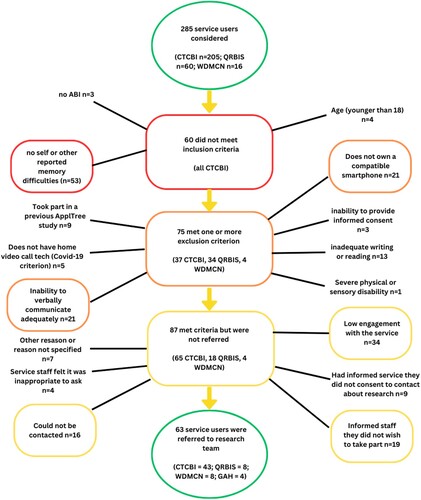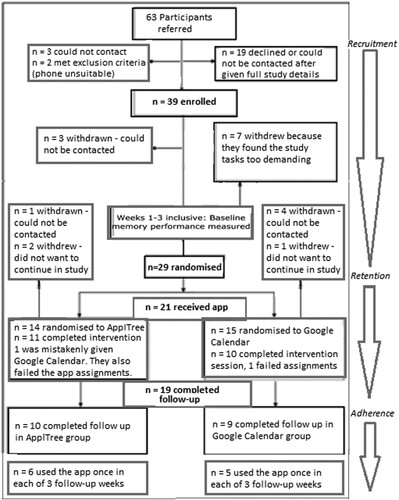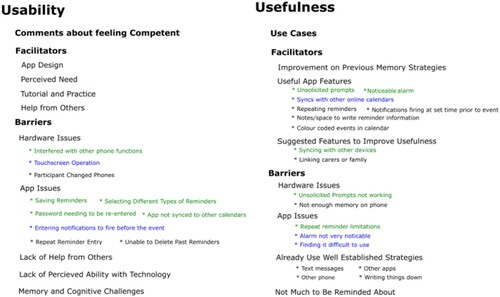Figures & data
Figure 1. Breakdown of the service users considered but not referred to AppReminders trial.

Figure 2. The trial flowchart with enrolment, recruitment, retention and adherence for the 63 referrals to the AppReminders trial.

Table 1. Baseline characteristics for the randomized participants.
Table 2. Change in memory performance for participants who completed the study in both ApplTree and Google Calendar randomized groups.
Table 3. Differences in UTAUT domain scores between ApplTree and Google Calendar groups.
Figure 3. Themes and sub-themes that arose from participants’ feedback after they were given ApplTree or Google Calendar apps.

Table 4. RBMT verbal memory, prospective memory and orientation plus TEA elevator counting.
